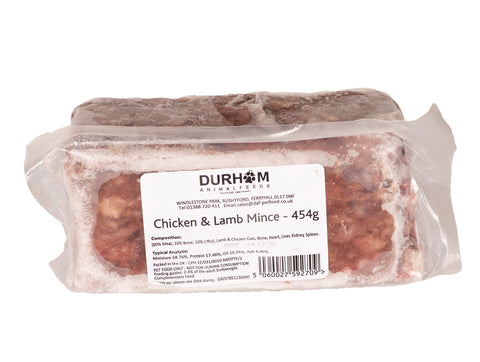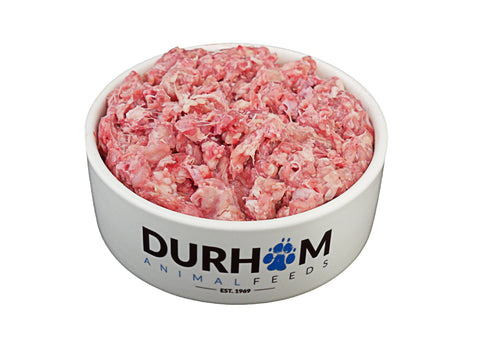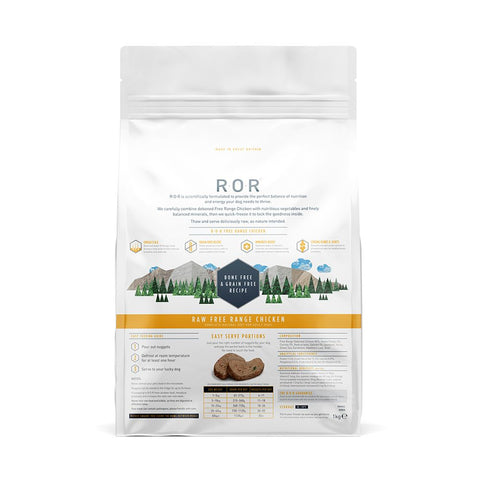Guide To Caring For Rabbits

Rabbits come in different shapes, sizes, and colours, and domestic rabbits kept as pets are fundamentally the same as their wild cousins – who live in large social groups and cover an area equivalent to six football pitches every day.
Rabbits typically live for around 7-10 years, although some can live up to 12, so you must be sure you can care for your rabbits for the next decade. If you are buying rabbits for your child, they will be your responsibility.
GENERAL CARE
Rabbits should be kept in neutered pairs or compatible groups, and never on their own – a male and female partnership work best.
Rabbits suffer from stress and loneliness if kept alone and they value companionship as much as food. We do not recommend keeping rabbits and guinea pigs together as they have a different set of needs.
Pet rabbits should be allocated some of their ownerís time every day as they enjoy attention, offering them a small treat is a great way to interact and build trust.
CHOOSING YOUR RABBITS
There are many varieties of rabbits available that vary greatly in size and temperament. Dwarf lop-eared rabbits are very popular due to their appealing looks and docile nature. Although a Dwarf lop is smaller than English or French lops, they can still weigh more than 2kg when fully grown. Longhaired rabbits are less suitable as pets because they need daily grooming, which can be time consuming.
Rabbits should be at least 8 weeks old when you get them. When you buy new baby rabbits, feed them the same food they have been used to, alongside plenty of fresh hay and water.
HOUSING
Rabbits should be provided with a large, spacious cage, so they can comfortably stand on their hind legs. A hutch for outdoors should be sturdy, water-proof and raised off the floor by approximately 25cm.
Place the hutch in a sheltered position so rabbits are protected from all weathers. A hutch cover, blanket or
piece of old carpet will often offer added protection on cold nights. A house rabbit’s cage should be
placed in a cool room and out of direct sunlight and draughts.
Rabbits are active; therefore it is essential they are allowed daily exercise outside their cage, whether in a safe garden enclosure or a rabbit-proof part of your home. An outdoor enclosure should be secure enough to keep the rabbits in as well as other animals out.
An exercise area that is permanently attached to their hutch or cage, which allows rabbits to exercise whenever they please, is recommended.
A hutch or cage is not enough for your rabbits, and should be regarded as burrows to rest in as part of a larger living area.
An exercise run on the lawn will allow your rabbits to express normal behaviour, such as running, digging, burrowing, jumping, hiding and grazing. It is important to be aware that your rabbits may dig their way
out of a run, so make sure you move it regularly to prevent escapes. Regularly moving the run will also allow your rabbits access to fresh grass.
If your rabbits’ run is attached to their hutch and is unable to be moved,
it is recommended to pave the floor and provide a digging box and
plenty of fresh hay.
All hutches and runs need to be sturdy and predator-proof. Before purchase, check hutches and runs have bolt locks, not swivel locks and ensure the wire is strong.
Rabbits are prey animals, so they’re naturally shy, quiet and usually dislike being held above ground level. Children should be encouraged to interact with them at ground level.
BEDDING AND HUTCH MAINTENANCE
A hutch or cage should have a layer of absorbent bedding on the floor with plenty of hay or straw for nesting. Any bedding that becomes wet should be removed daily along with any uneaten fresh foods. A litter tray can be used in the latrine corner, which is easier to clean daily. Hygiene is extremely important, particularly in summer. If not kept clean the hutch will attract flies and other undesirable pests, so it should be cleaned thoroughly at least once a week. Rabbits often use the same area for their toilet; this means they can be trained to use a litter tray, which can be easily cleaned out daily.
FOOD AND WATER
Rabbits should be fed in a way that is as close as possible to their natural diet, which is mostly grass and hay. We also recommend providing some fresh leafy vegetables and a small amount of commercial feed.
A daily healthy diet should be:
– 80% grass or hay. This should be available to your rabbits 24/7 from a hay rack if available
– 15% leafy greens and vegetables, such as kale, carrots and broccoli
– 5% commercial feed, approximately two egg cups
Hay provides rabbits with the fibre needed for a healthy gut and helps to prevent dental problems. Rabbits’ teeth grow continuously and so hay helps to keep them at a healthy length.
A wide range of prepared food is available and many are formulated for rabbits of different ages or sizes. Be very careful not to overfeed as this can lead to obesity. Do not change your rabbits’ commercial feed suddenly, as it can cause fatal digestive upsets.
A change in food should be done over a period of at least two weeks.
Fresh foods should be given in moderation. Baby rabbits, in particular, should only get very small amounts and contrary to popular belief, lettuce should be avoided. Suitable fresh foods include kale, spring greens, broccoli, and dandelions. Fresh foods should be washed thoroughly before feeding and should not be allowed to become frosted. Anything that is not eaten should be removed regularly.
Fresh hay should be provided at all times as rabbits’ digestive systems are sensitive and require a large amount of hay to eat.
Fresh water must be available at all times and should be provided both by a gravity-fed bottle and also a bowl.
HEALTH CARE
Annual vaccinations against Myxomatosis and another serious disease known as Viral Haemorrhagic Disease (VHD) are essential.
Unfortunately, it is very easy for rabbits to catch these diseases if not vaccinated.
It is important to have rabbits neutered as this helps prevent some behavioural and health issues, and allows for social groupings.
Pet rabbits should be registered with your vet and insured against unexpected veterinary costs as soon as possible.
It is recommended to check your rabbit underneath daily, especially during summer, to ensure they’re clean. All rabbits are at high risk of fly strike, as flies are attracted to soiled areas around the rabbit’s tail, where they lay eggs. If you suspect your rabbit has fly strike, contact your vet immediately. It is also recommended to find a rabbit-friendly vet.
Rabbits are traditionally kept in a hutch and run outdoors but are increasingly popular as house pets. If you decide to keep your rabbit indoors it is essential that your home is rabbit-proofed. Be aware of exposed electrical wires, other pets and plants – many of which are poisonous to rabbits. They also chew door frames, furniture and
clothes, and so should be supervised at all times.
SHOPPING LIST:
Large outdoor hutch/indoor cage, specious enough for two rabbits to run and jump
Hutch cover to protect from extreme weather
Large run or pen for the garden
Commercial rabbit food and ceramic food dish
Water bottle, bottle brush and water dish
Hay or freeze dried grass for feeding
Hay rack
Hay or straw for bedding
Absorbent bedding
Treats
Toys and tunnels
Pet safe disinfectant
Fly repellent
Nail clippers
Litter tray for indoor rabbits
Rabbit care book
The Animal Welfare Act 2006 means all pet owners have a legal duty of care to their pets. Anyone who is cruel to an animal or is found not to be providing the five animal welfare needs, as listed below, can be fined and sent to prison.
The Five Animal Welfare needs:
1. Environment: Pets should be given the correct housing according to its size, this includes shelter, space to exercise and a secure, comfortable place to rest.
2. Diet: Pets should be offered the correct type and volume of food to cover all their nutritional needs alongside access to clean, fresh water.
3. Behaviour: All pets should be allowed to exhibit normal behaviour patterns and should be provided with the facilities to do so.
4. Company: Some animals require the company of their own kind, whilst others should be kept on their own.
5. Health: All animals should be protected from pain, suffering, injury, and disease, and given veterinary treatment if they become sick or injured.
Credit to The Pet Charity www.thepetcharity.org.uk
Registered Charity No: 1052488










